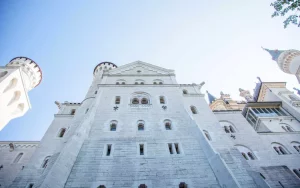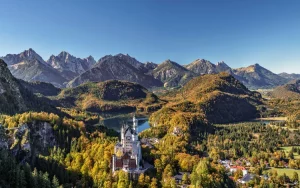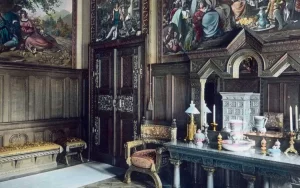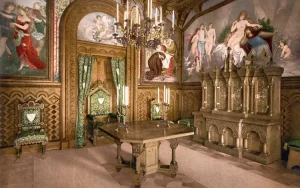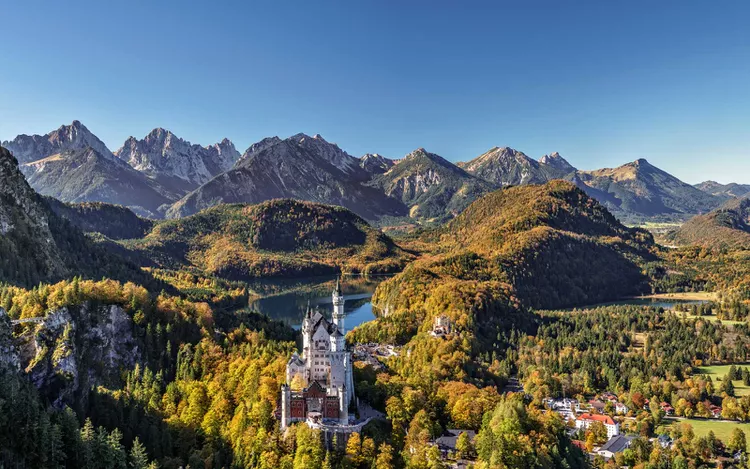
Enchanting Facts About Neuschwanstein Castle
Travelers looking to live out a fairy tale should head to Neuschwanstein Castle in Germany, the enchanting European palace that has inspired actual fairy tales.
Few places on Earth look more like storybook illustrations than Neuschwanstein Castle. With its towers, turrets, frescoes, and throne hall, Neuschwanstein (or Schloss Neuschwanstein, as it is called in German) looks like it was plucked straight from your favorite fairy tale. But the story behind this over-the-top palace nestled in the Bavarian Alps is less idyllic.
King Ludwig II of Bavaria commissioned the cliffside castle in 1868, just two years after Austria and Bavaria were conquered by Prussia during the Austro-Prussian War (sometimes called the Seven Weeks’ War), effectively stripping Ludwig II of his powers. He quickly retreated into a private fantasy world, surrounding himself with opulent castles where he could live out his dreams of being a true, sovereign king.
Ludwig II never saw the final Neuschwanstein, according to the Bavarian Castle Administration — he died in 1886 and the final towers weren’t completed until 1892. But within weeks of his sudden and mysterious death, the magnificent castle was opened to the public and quickly became one of the region’s most popular attractions.
Today, Neuschwanstein Castle is one of the most-visited castles in the world. Here’s everything you need to know about this charming attraction before you make the trip
Neuschwanstein Castle, which literally translates to “New Swan Stone” castle, is located in the Bavaria region of southeastern Germany. It was originally called New Hohenschwangau Castle, as it was meant to be a grand recreation of Hohenschwangau Castle, where Ludwig II spent his childhood. The older Schloss Hohenschwangau now sits in Neuschwanstein’s magnificent shadow.
Its modern name, thought to be a reference to Wagner’s character, the Swan Knight, was not acquired until after Ludwig II’s death.
Travelers visiting Neuschwanstein Castle will need to first travel to the village of Hohenschwangau, where the ticket center is located.
Though not particularly tall — Neuschwanstein Castle’s highest tower reaches a height of just 213 feet — its perch on a hill gives it an imposing silhouette.
